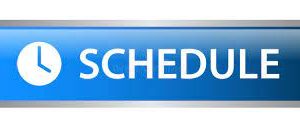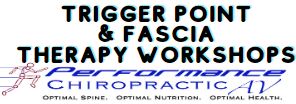Without a doubt, almost every patient coming into our office is plagued with postural and muscle imbalances. Outside of engaging in proper and aggressive intervention, these imbalances become worse over time, especially within populations where office work requires them to sit for long hours, for those who engage in repetitive movements throughout the day, and for sure, for people who are sedentary. Active individuals cannot escape this problem either. Athletes who only focus on a certain skill set for their sport and fail to address muscle imbalances may actually be at a higher risk than a sedentary person because higher-level activity requires better conditioned and balanced muscles.
Here are 5 principles to get you started on effective and efficient stretching.
1. USE A FOAM ROLLER
Prior to stretching, use a foam roller or other assistive device to apply gentle force on adhesions or “knots” that you may have. Trust me, you probably have them. Learn how to use these devices to your benefit. Knots that are worked out to any degree, even if temporary, allow you to stretch better.
2. ACTIVE-STATIC ISOLATED/DYNAMIC STRETCHING BEFORE A WORKOUT & STATIC STRETCHING AFTER A WORKOUT
Understand that there are different types of stretching techniques, each achieving a different goal and each used in specific circumstances. Some of these variations include: Static stretching, active-isolated stretching, dynamic stretching, isometric stretching, static active stretching, proprioceptive neuromuscular facilitation stretching, and more.
This can get confusing, I know. Although in a professional setting, we employ each type in very specific circumstances, for now use this simple rule:
In general, use active-isolated stretching (hold stretches 1-2 seconds) as your pre-activity warm up and STATIC stretching (hold stretches 20-30 seconds) as your post-activity cool down.
3. SYNCHRONIZE YOUR BREATHING WITH YOUR MOVEMENT
The mechanical action of breathing, both inhaling and exhaling, works with your nervous system. The way you breathe, both rate and rhythm, has a direct effect on whether you rev up your nervous system or calm it down. Obviously when you stretch, your goal is to relax your body. As such, during static stretching where it is recommended that you hold for a minimum of 30 seconds per stretch, it is often times easier to count number of breathing cycles. Typically, 4-5 cycles of deep breathing equal about 30 seconds. When doing this technique, focus on stretching the muscle ever so slightly more on the exhalation part of the cycle.
4. FOLLOW A LOGICAL ORDER
As always, every individual is different and so the needs may be different. A logical order for one person may be beginning with those muscle that he/she is aware are tightest and create the most problems, such as hip flexors and low back muscles. Once released, stretching the rest of the body is easier.
Another order may be stretching from deeper muscles to superficial muscles. Or, one can stretch anatomically from neck downward to toes.
The point is, often individuals only stretch 1 or 2 muscles ever and, in a non-structured way. These individuals often fail to recognize, let alone correct, other muscles that may actually need more attention.
5. STRETCH PAIN-FREE
Being successful at stretching tight muscles takes time and energy, no question about it. Unfortunately, beginners tend to want to rush. Anyone who has ever stretched too aggressively, not breathed properly, or has stretched inappropriately, has likely felt tighter and worse after having done so. A common thing I see is individuals “bouncing” at the end of the stretch or come out of a stretch too quickly, both which can cause serious damage. Take your time. Enjoy the journey….your body will appreciate.
For more information or to make an appointment in our office, Contact Us.
Rick Duenas, DC, CES, NASM-CPT
Chiropractor/Corrective Exercise Specialist/Certified Trainer




FOLLOW US!